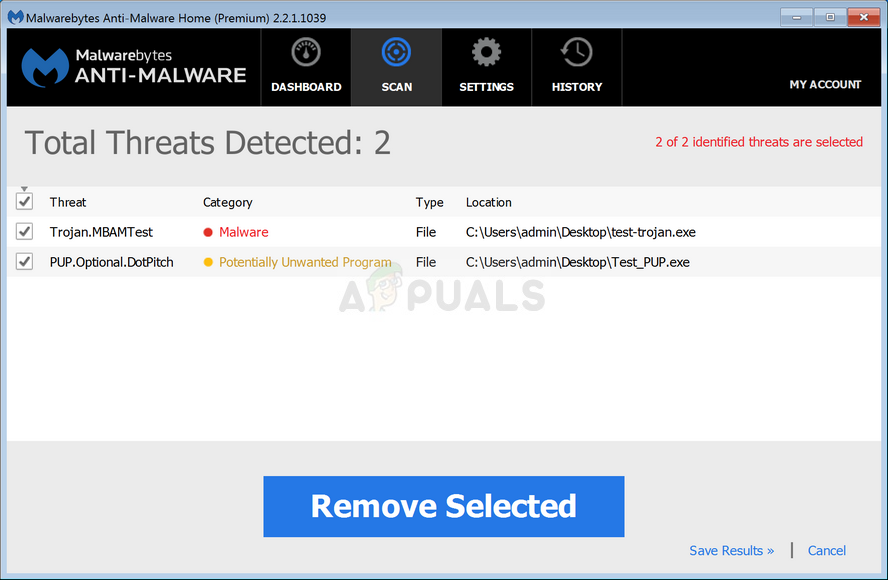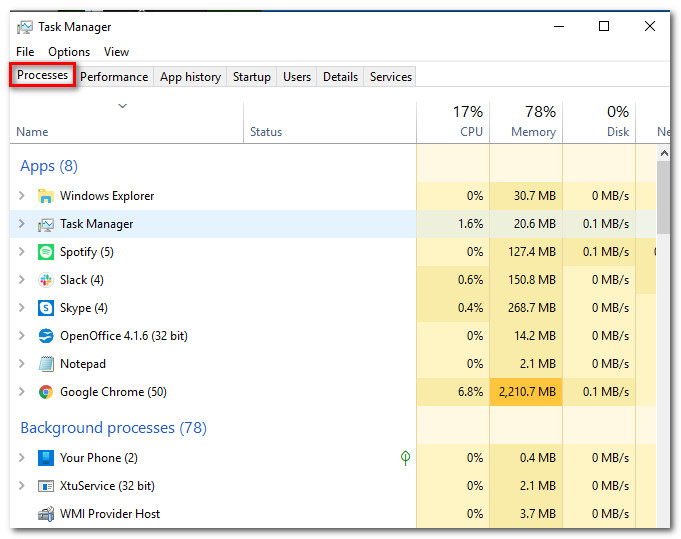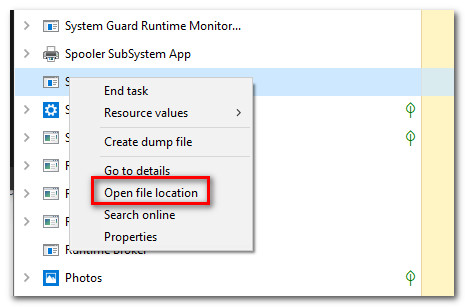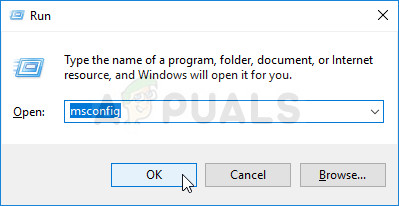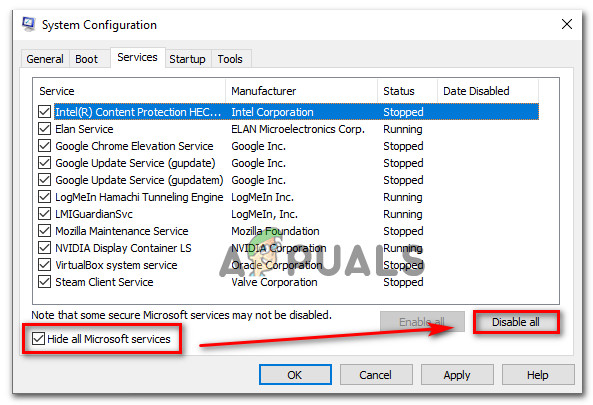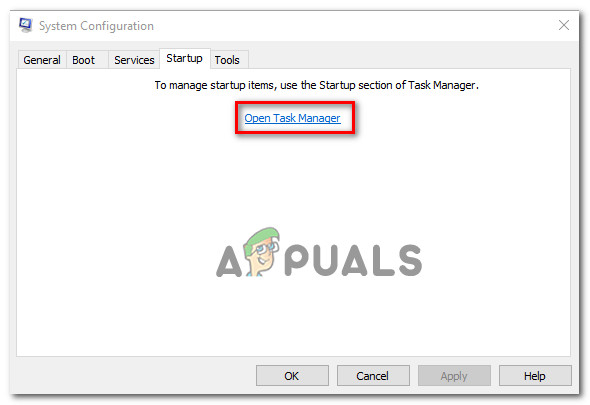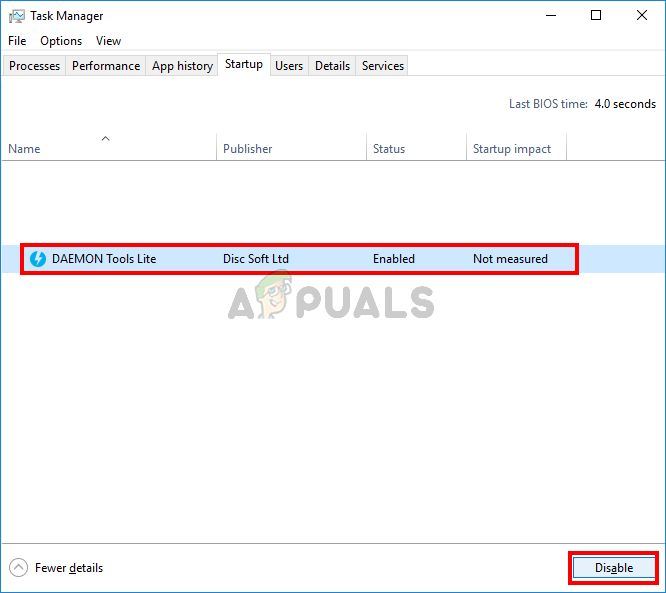What’s causing the ‘DifxFrontend failed’ error?
We investigated this particular issue by looking at various user reports and the repair strategies that are commonly being used to fix this particular startup error. As it turns out, several scenarios will trigger this error message. Here’s a shortlist with potential culprits: If you’re currently looking for ways to resolve this problem and get rid of the annoying startup popup, this article will provide you with several repair strategies that other affected users have successfully used to fix this behavior. Each of the potential repair strategies features below is confirmed to work by at least one affected user. For the best results, we advise you to follow the methods in the same order that we arranged them in since we ordered them by efficiency and severity. Regardless of the culprit that’s causing the problem, you should eventually find a viable repair strategy that will resolve the issue. Let’s begin!
Method 1: Running a security scan
As it turns out, this particular issue can also be caused by a virus infection. Several malware executables will camouflage themselves as support files and will try to infiltrate the System file folder and the Registry. The most commonly reported file that will cause the Could not recognize operation: A! “DifxFrontend failed!” is a Dell Support file. This fairly common adware will end up causing startup errors if the security suite only removed part of the virus infection. If this scenario is applicable, you should be able to resolve the issue by running a security scan with a competent virus removal scanner like Malwarebytes. Several affected users have reported that the issue was resolved after they ran a deep scan with Malwarebytes – After doing this and restarting their computer, most affected users have reported that the issue has been resolved. If you’re not exactly sure how to run a deep Malwarebytes scan, follow this step by step article (here) for step-by-step instructions on doing this. If the issue is persisting even after you clean your computer of viruses or this method wasn’t applicable, move down to the next potential fix below.
Method 2: Dealing with the corrupted InstallShield installation
As it turns out, this error message can also occur if your InstallShield installation is incomplete or crippled by file corruption. InstallShield uses DIFx (Driver Install Framework) to install drivers and later versions of InstallShield and add them to the Device Driver wizard. But under certain circumstances, InstallShield might overuse your system resources by continuously trying to complete installations. This behavior can be visible inside Task Manager – If you see one or more applications named after your First Windows account name, you’re dealing with a glitched instance of InstallShield. If this scenario is applicable, you should be able to resolve the issue by accessing Task Manager, discovering the location of the application and deleting them completely. This procedure has been confirmed to be effective by several users struggling to resolve the Could not recognize operation: A! “DifxFrontend failed!” error. Here’s a quick guide on taking care of the issue: If you’re still seeing the startup error Could not recognize operation: A! “DifxFrontend failed!”, move down to the next method below.
Method 3: Starting in clean boot
If the first two methods above have worked for you, a 3rd party application likely is what’s causing the constant startup error. Since we can’t possibly compile a definitive list that will contain all possible culprits, the best scenario is to provide you with the means so you can identify the culprit in your particular situation. And the easiest way of doing this is by achieving a clean boot state where there’s no 3rd party interference. If the Could not recognize operation: A! “DifxFrontend failed!” error doesn’t occur while your computer boots clean, you can safely assume that you’re dealing with a system component. Here’s a quick guide on configuring your machine to start in clean boot: If the same Could not recognize operation: A! “DifxFrontend failed!” error is still occurring, move down to the next method below.
Method 4: Running SFC and DISM scans
If you’ve already booted your machine in clean boot mode and the Could not recognize operation: A! “DifxFrontend failed!” error is still occurring, you can safely assume that the issue is being caused by a system component. In situations like this, the best possible fix is to rely on a series of built-in utilities that are designed to take care of both corrupted system file and logical errors. DISM (Deployment Image Servicing and Management) and SFC (System File Checker) are two utilities capable of doing this. While SFC uses a locally stored archive to replace corrupted files with healthy copies, DISM relies on WU (Windows Update) to download fresh copies of the corrupted instances that need to be replaced. But since both utilities have their strong points (DISM is better with GUI issues while SFC does a much better of fixing logical errors) the ideal scenario is to run both utilities (one after another) to ensure that any corrupted issue is fixed. Here’s a quick guide on running DISM and SFC scans from an elevated Command Prompt window: Note: Some users have noticed that this issue is caused due to an issue with some third party applications installed on the computer. One such application is discord, so, if you have discord installed, try uninstalling it and then check if the error still persists.
Fix: Windows Failed to Start Error on StartupFix: Windows Failed Fast Startup Error 0xC00000D4Fix: Unifi Controller Startup FailedFix: BattlEye Service Startup Failed

